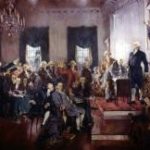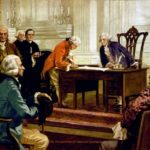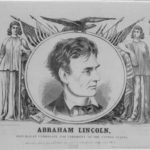Students will engage in a study of the Constitution to learn about the nature and structure of the United States. The Constitution will be analyzed and discussed as a primary source to understand the form of government and principles of the U.S. This lesson provides students an opportunity to explore how the government works and what the Constitution means to them today. Students will create a song to demonstrate understanding of the Constitution and nature of the U.S. government. Constituting America has a song contest teachers may want to integrate with this lesson plan.
The Constitutional Convention: Fine Tuning the Balance of Powers
History is the chronicle of choices made by actors/agents/protagonists in specific contexts. This simulation places students in the midst of the Constitutional Convention, after the Committee of Detail has submitted its draft for a new Constitution on August 6. With that draft’s concrete proposals on the floor, students will ponder questions such as: Is this the Constitution we want? Are the people adequately represented? Are the branches well structured? By engaging with these questions mid-stream, before the Convention reached its final conclusions, students will experience the Constitutional Convention as process, a supreme example of collective decision-making.
George Washington and the Constitutional Convention

This short video discusses George Washington’s “infinite care in preparing the Constitution for posterity.” As Chair of the Constitutional Convention, Washington was most often silent, but he did cast a crucial vote in the Virginia delegation, resulting in the adoption of the Connecticut Compromise. Professor W. B. Allen emphasizes the role played by Washington in providing leadership and structure as the principles of the Constitution were argued and articulated.
Challenges to Ratification of the Constitution

This video examines the need for and the challenges faced by the new Constitution. Delegates to the Constitutional Convention, originally an ad hoc gathering to revise the Articles of Confederation, quickly realized the need for a new political structure to strengthen the federal government. Professor John Kaminksi notes the role played by George Washington in legitimizing the Convention, as well as the significance of the decision to require ratification through conventions in 9/13 states.
Abraham Lincoln’s Fragment of the Constitution & the Union (1861): The Purpose of the Union
The Constitutional Convention: Creating an Executive
History is the chronicle of choices made by actors/agents/protagonists in specific contexts. This simulation places students at the Constitutional Convention and asks them to explore one of the fundamental quandaries faced by the framers: how to create an executive branch that lacked monarchical prerogatives yet could make the government function more efficiently. By discussing and debating the various options, students will gain a deeper understanding of the choices the framers faced and why they opted for particular structures, ones we live with today.
The Constitutional Convention: Composition of Congress
History is the chronicle of choices made by actors/agents/protagonists in specific contexts. This simulation places students at the Constitutional Convention and asks them to construct a legislative branch for a proposed new government. Should there be one branch or two? Should each state get an equal voice in the legislative branch? By discussing and debating the various options, they will gain a deeper understanding of the choices the framers faced and why they opted for particular structures, ones we live with today.
